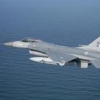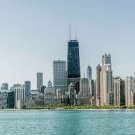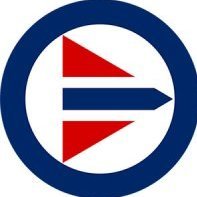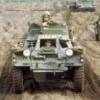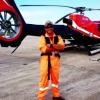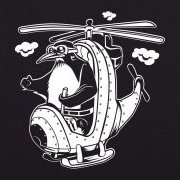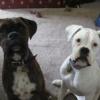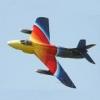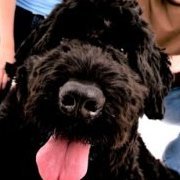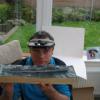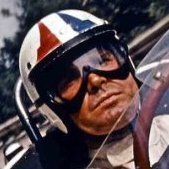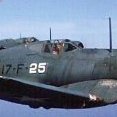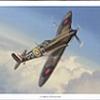Leaderboard
Popular Content
Showing content with the highest reputation on 11/08/19 in all areas
-
This is my rendition of a 1940 Tiger Moth from the RAF Flight Training School. It's the 1/72 Airfix kit plus the Eduard PE set and some additional bits from the Eduard PE "stretchers and control horns" set. The build was started in August 2015 as my entry to the "Tiger Moth STGB". As usual, I didn't manage to finish it in the GB's time frame and could only resume the build this year. This time, it was finished. Some notable points of the build: Extra detail from Eduard's Tiger Moth PE set Extra control horns and stretchers (underside of the tail plane and inter-wing rigging stretchers from the Eduard PE "stretchers and control horns" set) EZ-line for rigging and control cables Control mechanism and cables for the ailerons added (underside of the fuselage, behind the landing gear) Rudder deflected to the left, as usual in TMoths on the ground Alclad Grey Primer Paints from Gunze Aquos Light weathering using dry brushing of lighter tones on wing ribs and Vallejo acrylic brown wash overall Alclad Flat coat The WIP thread is here. Here are the pictures: 1. General views IMAG6375 IMAG6376 IMAG6377 IMAG6378 IMAG6379 IMAG6386 IMAG6380 IMAG6381 IMAG6383 IMAG6382 IMAG6384 IMAG6385 IMAG6387 2. Rigging and control cable details IMAG6389 IMAG6390 IMAG6395 IMAG6396 IMAG6391 IMAG6392 IMAG6398 3. Cockpit details IMAG6393 IMAG6394 4. Aileron control mechanism and actuators IMAG6397 IMAG6401 5. Landing gear details IMAG6399 IMAG6400 6. Family picture Here we can see a Spitfire Mk. I, the Tiger Moth and a Defiant, all from 1940. IMAG6402 Thank you for looking. All feedback is very welcome. Cheers Jaime32 points
-
Hello everybody... Some of you know I've gone a bit Daffy lately, and started a long term project. Im building all of the major variants of one my favorite pilots Josef "Pip's" Priller. I have started with his first mount with JG-26 the Bf109-E7, white "8". It represents a time frame sometime in the late spring of 1941. For this build i used the newer Airfix 109E4 kit in 1/72. I modified it by giving it a full spinner, and used a spare drop tank mount & Eduard tank from a BF-110D kit. The antenna snapped when removing it from the sprue do that is just a piece of plastic strip cut to length. Questions, comments, or thoughts are welcome ? My next Priller build will be his Fw.190A3, so if you're curious please check in on the link from time to time. Dennis23 points
-
Hi folk's,the madness continues over in the Frog GB,my latest efforts are the Hellcat and Corsair,usual script build'em like we used to back when they were the latest thing hopefully without fogged up canopies and fingerprints in the paintwork.The Corsair is 100% kosher including the original decals,Hellcat's hadn't worn well so replaced the roundels saved the codes.Many thanks for looking Oh and for our "younger" members Frog went bust way back in the seventies so these kits are all over 40 year old boxings!23 points
-
Just wanted to share some pics of one of my latest finished models. F-8E Crusader BuNo. 149159, VF-162 "The Hunters", USS Oriskany, September 1966. From de Eduard kit #11110 (Hasegawa rebox). Scratched catapult attachment. Scratch of the brake bay, to place it in just open position. Thinned out edges: rudder, stabilizers and flaps. Wingfold corrected in the upper wings. Entirely riveted with Rosie. Painted and effects with AK products. I hope you like it! greetings from Argentina!20 points
-
Dear fellow Britmodellers, here's my 1/72 SBS Fiat G.50 in colors of the Croatian Air Force in 1943. This was my very first full-resin kit, and while parts look beautifully crisp in the box, assembly is complicated by some fit issues. Wing-fuselage and engine-fuselage joints were the worst offenders. In the hands of an experienced resin modeller, this kit could turn into an absolute show-stopper - I'm just not one of them …. Painted with Gunze/Mr.Hobby acrylics, photographed by Wolfgang Rabel. Thanks for your interest.19 points
-
Being a "McDonnell" myself, I have a different heart when it comes to McDonnell Douglas aircraft. I had started this with the Jolly Rogers Phantom and have just finished it. Some riveting with a riveter and PE cockpit sets are the extras. Thanks for looking and your comments. John18 points
-
Caudron CR.714 C-1 No 8538, flown by Sgt L Uher, 1st Escadrille, Groupe de Chasse I/145, Villacoublay, France, 1940 In the mid-1930s, the French government decided to quickly increase the numbers of modern aircraft in service. Caudron, along with Arsenal and Bloch, was approached to develop a light fighter of wooden construction that could be built quickly in large numbers without causing disruption to the existing types already in production. The original Caudron design was designated CR.710. The characteristically long nose, with the cockpit set back far on the fuselage was a family trait that could be traced back to racing aircraft of the 1920s and 1930s. The CR.710 prototype, which flew in July 1936, showed potential, and eventually led to the CR.714 “Cyclone” which flew in April 1938. The CR.714 was powered by a new version of the Renault 12R-03 inverted supercharged V-12 engine, developing 370kW (500hp), and with a carburettor that could operate in negative g. Armament was four 7.92mm MAC 1934 machine guns, mounted in pairs in wing gondolas. The French Air Force ordered 20 aircraft, with options for a further 180. Production began the summer of 1939, at a Renault factory in the Paris suburbs. Deliveries didn’t begin until the start of 1940. Testing the first production aircraft showed the design had serious flaws. Despite being lightweight, the design did not allow a new, more powerful engine to be fitted. The 500hp 12R-03 seriously compromised climb rate and manoeuvrability, and the type was withdrawn from service in March 1940. The initial production order was reduced to 90, of which 80 examples, intended to be flown by French pilots, were diverted to Finland. Events in France, however, resulted in only six planes being delivered to Finland, with a further ten crated up in harbour when deliveries were stopped. 35 Caudron were delivered to the Polish Warsaw Squadron, comprising men who had escaped the German occupation of their homeland and were continuing the fight with France, on 18 May 1940. The pilots soon confirmed the type was seriously underpowered and no match for contemporary German fighters. On 25 May, all CR.714s were ordered to be withdrawn from active service. Since the authorities had no other types to offer, the Polish pilots ignored the order. Despite being hopelessly outclassed, GCI/145 scored 12 confirmed and three unconfirmed victories between 8 and 11 June. Nine CR.714s were lost in air combat, and a further nine on the ground. The type continued to be used by the Polish training squadron based in Bron, near Lyon. They succeeded in dispersing some enemy air raids, losing no aircraft but recording no kills. By the fall of France at the end of June, only 53 Caudron production machines had been delivered. The RS Models kit is fairly typical of modern limited run injection moulded kits. The parts were finely detailed and free of flash. No PE or resin details were included. Being a small aeroplane, the kit contains only 37 parts, including the clear parts. I added some aftermarket PE seat belts, and chose to replace vulnerable parts such as pitot, machine guns and antenna mast with brass wire for strength. The model was painted with ColourCoats enamels for the camouflage scheme, with details using Humbrol acrylics and enamels. Aside from my usual painting issues - I will get it right one day, surely? - the kit went together quickly and with few vices. The full WIP, such as it is, can be found starting here:17 points
-
On a wet summer day Alex (8yrs my favourite Grandson!!) chose a Harrier from the Starter Kits to put together. How fortuitous because the kit was based on a Harrier from RAF Wildenrath 1974. As a RAF Cadet (School) I had spent a wonderful week at this base in 1974 with other UK School based RAF Cadets. My daughters kitchen table was going to be the construction site! Other things bought, a tray, some nail cutters, cocktail sticks, a set of make up brushes, nail files, silver and gloss Humbrol acrylic range and cheapest Asda superglue. My aim was to build the kit quickly enough so that Alex's attention span didn't flag, something that we could both enjoy and didnt turn into a trial... Organisation In the tray, glues away from the kit pieces, seperate food trays for parts to be glued and those glued, washing hands, washing brushes and crossing off on the instruction sheet all helped to keep some asemblance of organisation. Putting together We followed the instruction sheet closely and used my experience as to when to paint, when to glue and when to leave. It also allowed me to practice some skills - dry brushing and use of water colour pencils. Alex cut the parts from the runners using scissors and he\we nipped the lugs off with straight and curved nail clippers. Gluing we used the kit glue and cocktail sticks. I usually gave most joins a run of superglue to speed the process up. What Alex could do and what I had to do, evolved during the build until Alex was cutting the parts out, nipping the lugs off and then sanding these parts. The fuselage join needed a phased gluing with "plastic' and 'super glue' with clothes pegs. This was done while we were putting together the under carriage fuel tanks and rocket pods. Painting We used the kit paints and the kit brushes. We used 4 straight strips of masking tape. Painting I drew the out lines and Alex blocked in the colours. He was surprised beyond belief - when I asked for his mum's hair dryer! The paint dried so quickly esp. with the hairdryer that we could paint almost continuously and the paints at this level were excellent one coat covered mistakes. Breaks for sandwiches water tea were generally governed by Alex. Stickers!!/Transfers Alex thought the transfers were stickers, so he found it very frustrating, to have to place them in water and then put them on the model, this took more time that he could give... We discussed whether to put the wheels on or not, I persuaded him to keep them off because they would break far too easily doing touch and goes and attacking his Lego. I did some touching up and practised some of my skills when he was a sleep. Mistakes not many but gluing one of the fuel tanks the wrong way round was mine! Two days and the job was done it will be interesting to see whether Alex wants to make another, when Grandad comes to look after him during the School hols?14 points
-
Start of bench was delayed somewhat this morning: Myself and the kittens have had to come to an arrangement now that they get a few minutes' exploration time when they find me in the studio before I shoosh them out, otherwise I get no peace. Whilst they were in clambering over everything I was idly throwing an eye over the Anson and noticed that at some point I've managed to knock the transparent nose section off at the front: Who knows at what point that went awol but there's not trace on the ground. Oh well. I have to drill another couple of holes anyway in the nose section so at least I can get that done and cleaned-out before adding a new nose back on - much later in the build so there's less chance of a repeat offence. It's just the main bench light Ian: It's an old lamp from a rostrum camera that I picked up when they were clearing out one of the studios at work last year. Being slightly more powerful than a standard desk lamp I find it not only fires a good circle of light over most of the bench but is great for holding parts up to at an angle in order to eyeball any surfaces for imperfections - of which there are usually many! And as you say, gives a good strong light for photography (for which it was designed). Experimented with both 0.36mm and 0.2mm Ian: in the end the 0.2mm sheet won hands down in both the surface detailing and flexing-into-curves categories (0.2mm on the right): Sage words. I did do a test to satisfy my curiosity as to whether TET would cause any rumples and crumples in the thin material and was pleasantly surprised to find that even in quite generous amounts, that I couldn't detect and deformation to the test surface: I promptly went and did exactly that chaps -thanks for the nudge. Thanks on all counts Benedikt. One day I'm gonna build that Parnall Peto I've promised myself Giorgio & Terry! (Just have to find who ended up with all the plans from the Parnall company as the British aircraft industry went through a Byzantine series of mergers and acquisitions during the last century...) Oh I don't know. There's just something about the way that 'Lanchester Landaulette' trip off the tongue Pete. Like it might also have been a dance or a cocktail. I know bugger all about cars tbh but considerably more about cocktails and the wild inebriated dancing they can give rise to... Chars Ced. Oofally naice of one to buck up the the old morale as handsomely as you do. 🧐 Dash it all man. Lucky I can't tell a longeron from a stringer and simply put some 'in-between bits' in.... I am with you in this direction Anthony. I once built a dog kennel that a family of four could have survived a nuclear winter in. When the glaciers creep back down to cover the West of Ireland they will butt up against it and be stopped in their tracks... Making your own masks was exactly why I bought a Silhouette in the first place! (at which it excels if you use Oramask) Like so many tools, only once I'd got one to hand did it become apparent that you could experiment with so many other tasks. I think I've got the hang of using it to cut shapes from plastic now and have just ordered one of these from the States in order to be able to score designs into brass for similar ends. They are a pricey item of course but if you're into a particular kind of modelling it gives an unparalleled scope and flexibility in a single item. Being surrounded by so much knowledge and expertise on here Roger is a great spur to action! Anyhoo. I've nearly got the new profile to the belly finished now. After making up a paper template on the aircraft I was able to transfer the dimensions into a design in Illustrator and thence across to the cutter to punch them out into styrene sheet: The main run tapering to the right is all a single length, the scored line a quarter of the way in from the left being where the removable front panel gets snapped-off to form a separate section with a defined edge. From 0.2mm sheet this design popped free with a couple of flexes and no cutting required. Working out how many longerons...errr stringers....errr...stripes there are running down the underside: Pencilled on to the sheet and waiting for the Big Heavy Ballpoint of Destiny: @limeypilot I remain most grateful to you passing this technique on. Highly effective: Forward panel TETed into position and lashed down: And a few minutes later, the main rear section wiggled in and battened down: Anywhere that plastic panel met plastic fuselage I used TET; for areas where there was Milliput on the fuselage I relied upon Gator's Grip for the bond: Expect it will need some PPP rubbed in along the seams in a few places just to smooth the interface, but that can wait for another day. No chance of getting any more done today now. Tiny Kitten's found his way in and wants a cuddle: Another busy week beckons at work but good to have a hiatus to ponder the next moves eh? Thanks for looking-in! Tony14 points
-
Hi all, I have been doing this for a while now (whilst taking part in the Frog Squad GB and still doing the house), it is a lovely kit and went together quite well. The model is depicted as an early marque with the Hawk rudder. The scoops and exhaust were hollowed out and the control cables for the rudder were added. The model was brush painted in Humbrol 24 Trainer yellow, yes it drove me mad and took six coats. The Engine cowling was painted in Humbrol metalcote polished aluminium, and buffed with a cotton bud and coated in several coats of Klear. Hope you like Thanks for looking All the best Chris11 points
-
Awww thanks Giorgio Thanks Ben, good tips Thanks Tony (especially for the lolly), Ian, Terry, Roger and Simon Thanks Martian - playing in the background as I type this. 'B sides'? Don't talk to me about 'B sides', hate 'em Oooh, it's gone on to play side A… Funky! Note to future modellers. The turret goes into the fuselage like this: … or it will with a bit of fettling. Now then, how are you going to protect the turret after close up while you're doing all the other stuff? Eh, tell me that then? Simple dear Watson - the lower part is used for the 'closed option' so I'll just glue that in, temporarily, like this: it'll be fine. I'm sure. Probably…11 points
-
F2H-3/-4 Banshee VF-11 "Red Rippers" | U.S. Navy I finished this on August 11, 2019. It is the 1991 boxing of Hobbycraft's F2H-3 (Big Banshee). The original decals were terrible (see my WIP for details), and I was fortunate enough to find decals from the 1998 boxing on ebay to complete the dark blue Banshee I always wanted to do. I had to scratch build some details on the outside, and added to the very inaccurate seat to make it at least a little more realistic. I also cut the wheel off of the nose gear and re-glued it 180 degrees to try and make it look more like the -3 gear since Hobbycraft put the -1/-2 gear in the kit (many thanks to @Tailspin Turtle for putting me on the right path early on; I may have missed it until it was too late). In general the kit was fairly well engineered despite the inaccuracies with the nose gear and cockpit and a complete lack of landing gear bay detail. I had little seam work to do along the fuselage and the wings fit reasonably well. The wings had a bit of a step, but I just positioned them so that the step was along the bottom. I black based the paint, marbling it with gray and light brown, to give a hint of sun-fading and general paint wear. After the decals were on and sealed, I did some light salt weathering to match reference photos that I put in my WIP). I think the combination made an accurate depiction of what I saw in my reference photos. It is also very hard to capture in pictures. Lots and lots of thanks to @Tailspin Turtle and @Pat C for helping me out with the details! Finishing: Seams filled with CA (superglue) Paints: Mr. Surfacer 1500 Black base > marble coat of Mr. Color Engine Gray, and highlighted with Testors Gunship Gray (darkened with a drop of black), Mr Color Wood Brown, and Testors Rust > Testors FS15042 Decanted from spray can > 2 coats of Alclad Aqua Gloss (Hand brushed) > 2 coats of Alclad Aqua Gloss (hand brushed) as a decal sealer Decals: Kit decals from 1998 Hobbycraft boxing Weathering/Wear: Oil wash on the landing gears, Salt weathering with 5 parts decanted Testors Dark Sea Blue with 1 part Model Master Light Ghost Gray and thinned heavily. Scratch-built tail bumper, pitot tube and radar altimeters: More scratch building: Scratch-built cockpit detail: and seat: Thanks for looking! Questions, comments and constructive criticism always welcomed!10 points
-
Can't believe it's almost a month since I began this post. Work has been murder since I got back and every weekend SWMBO had loads of "Honey do's" waiting. The little modellingI've been getting done has been during conf calls whilst somebody was droning on about something tedious. I've also been trying to buld this wee thing in 1:350 for a couple of months: Currently at this Blue-Tacked stage: Anyway, on to Jura progress... Told Her Maj that this weekend I wasn't doing anything but modelling so... Having spent some time trying to decipher the plans and not really getting anywhere in 1:144 I decided to try a test build in 1:350: Got a kind of skeleton built to work from: Fitted the deck and plastered it in Isonpon P36, she's looking a bit rough and gnarly at this point: Then the wet sanding started, lots of sanding... Sanded down till the "ribs" started to show: Then started gently contour sanding the very graceful and lovely bow line these ships had. Spent an hour or two gently moulding her buttock lines to the right shape (fnar fnar). I hope the shape shows up correctly: I think I might sand the bow down a little more but decided to stop for tonight in case I mucked it up. Also discovered the Mid Deck measurements are 1mm too wide each side so I might have to sand the sides down a little bit. It probably wouldn't be noticeable in 1:144 but I think it will be in 1:350, her hull slope at MLD isn't sheer enough.10 points
-
Hello everyone... I present to you my Revell P-47D in 1/72 scale. I used a set of aztec decals Juicy Jug's. These are for post war Mexican Air Force Thunderbolts. I used two of the national markings and tail flashes to make a World War II version. I like the decals and kit so much that i will be building a few more of the Latin American options on the sheet. The 201st was assigned to the USAAF 58th F.G. In the Philippines. My hope is that it passes muster, a link to the build log in case you are curious ? Please feel free to ask questions, comment, ot give me your thoughts. Dennis9 points
-
This was actually intended for Lockheed GB But one thing led to another, I missed the build deadline, and finished it several days ago... So here it is.. Hasegawa 1/72 CF-104, OOB beside wires for the ejection seat. I use mostly AK Interactive Xtreme Metal, Mr.Hobby Super Metallic, and Mr.Color paints. Cheers, Mario9 points
-
The Breda Ba.65 was an all-metal single-engine, low-wing monoplane used by Aviazione Legionaria during the Spanish Civil War and Regia Aeronautica in the first part of World War II. It was the only Italian ground-attack aircraft that saw active service in this role. It saw service almost exclusively on the North African front. A total of 55 machines were exported and used by the air forces of Iraq, Chile and Portugal. Short-run from SH.9 points
-
Firstly, the solid cockpit with disembodied pilot's head (already decapitated in this photo) had to go! Then I cut out the solid block to open up the cockpit ... ... and tidied it up. I found a few scraps to try and make a rudimentary cockpit from.9 points
-
Here are some pictures of the mostly finished main deck...9 points
-
That's most of the PE I can manage. I've not got it in me to build all the lever boxes. Ill do the seats and seat belts in the morning.9 points
-
Hello all, This has sat on the shelf of shame for quite some time but it was resurrected while doing the King Tiger. Not a bad little kit but the rubber tracks are not up to repeated washes and broke. She almost got permanently binned but i remembered spare Revell Panther tracks - Used them but in trying to get the rubber tracks on I broke an idler wheel, drive sprocket and one of the roadwheels fell off. A bit of a checkered history. Happy Modelling All, Ian8 points
-
Frog F4 1/72 with extended nacelles used to test reheat, with homemade decals Steve8 points
-
I seem to have misplaced a few months. Most of today has been consumed applying more strips of masking tape. It's now ready for primer.8 points
-
A good day on the Sealand today. All the kit parts have now been assembled, although there are a few additional lumps and bumps that I still want to add. Filling all the recessed decal placement markers was a chore, but gives quite an impressive effect! Cheers Cliff8 points
-
Fitted the rear-view mirrors, aerials and props and they're done: Or are they? What's this? Exhausts. I am an idiot. Painted now. Note the little 'paint tray'; it's the plastic bit of a hearing aid battery case. Recycled, or is it re-purposed? Neat.8 points
-
8 points
-
WW139 as aboard Ark Royal in the mid 1950s This Sea Venom was the second one delivered to the Royal Navy (the aircraft now preserved at the FAA Museum being the first) and served until 1961. The old Frog kit had its challenges but was a simple and enjoyable build. Just a few extras I added; the strakes in the intakes and some cockpit detail that you can barely see. I also used a vac-form canopy very kindly donated by @perdu that I cut to display open. I was pleasantly surprised by the decals, I thought they might break up but they were fine.7 points
-
I think that’s all the bits stuck on now. Look carefully and you can see the repaired damage on the wings. No, I’m not going to point it out for you. 😉 I think a very careful varnish respray over the repairs, and I shall call this done. Notice how the matt varnish has magically smoothed out the brushmarks on the camo? I think it’s because light doesn’t now reflect from the edges like it did when shiny. When the repair varnish to properly dry, I’ll set up a photo shoot and get this in the RFI section.7 points
-
Thanks to the Johns WhoFan is right - also, condensing dryers don't need a vent - they condense the water into a tank that you have to empty - into a bottle for your modelling! Biggles that's very kind of you and I put it down to the Colourcoats! Here they are with the 'Beer Barrel' Spitfire (also and option in this Combo) that I completed 'some time ago' from another kit and AM: on Flickr Thanks Giorgio - done! In the Gallery here. As usual, thanks to all for your help, support and companionship during this build. Especially the bit where, apparently, I got a bit modest; it won't happen again Back to the Whitley. I've got this far.7 points
-
The first of my 'strange marking' Spitfires from the Eduard 1/72 'Longest Day Combo'. This one ML214 of 214 Sqdn. that was painted with 9" stripes over the serials: WiP thread here.7 points
-
Gent's thanks for all your kind words it is really appreciated So trying to get MO and JO back at it more painting done I think the masking for the bridge structures will be a bit of a challenge and somehow I have managed to lose a small bit from the winch to the carpet monster which in itself is a strange one as there is no carpet in the garage will have to make one of the sticky up things bit of practise to my scratch build none existent skills suppose you have to start with the small things first beefy7 points
-
Hi All. Here some pics with Austin Tilly in Mickey Mouse pattern camo from 51st Highland Division (thanks John!). The black is, according to M. Shacketon, Nato Black while the brown is a compbination of Nato Brown and Yellow in 50/50 %. The interior is not completed. Hope you like. Ciao Filippo7 points
-
well as I seem to have mastered this posting pictures thing I can show off a couple of my completed models Tamiya 1/48 Corsair IMG_20190809_144910 by Tim Dyson, on Flickr://flic.kr/p/2gTskMp][/url]IMG_20190809_144428 by Tim Dyson, on Flickr IMG_20190809_144457 by Tim Dyson, on Flickr IMG_20190809_144444 by Tim Dyson, on FlickrIMG_20190809_144552 by Tim Dyson, on Flickr HobbyBoss Wildcat IMG_20190809_145400 by Tim Dyson, on Flickr ICM Mustang IMG_20190809_144910 by Tim Dyson, on Flickr7 points
-
Cheers guys Ivan, a big dose of Modelcillin mate Just spent an hour sculpting the seat cushions for the troop compartment out of Green Stuff. Don't they look comfy...…. Not ! Even our 43's had better cushions than these wafer thin things Enjoy Dan7 points
-
7 points
-
Thanks to those of you who followed my WIP, although small in content, helped me with some inspiration to see this through. I was satisfied with the end result and there is much for me to ponder that I will try and improve on for my next build. Overcoming some challenges in the end made it a success for me. I am glad to share with you. Hasegawa F-4 long nose but some modification needed. Eduard cockpit photoetch set and TrueDetails seats. Most of the rest came from the normal parts included. Paint was a combination of Tamiya and Vallejo, most lightened slightly. Revell paints are not available here in Canada, that would have provided better matches. This is the inspiration for me project, the original photographer was kind to send me an original image for me to use here, thank you Mr Friedrich Becker. Thank you for viewing and appreciate any and all comments. Craig6 points
-
Hi guys here is a golden oldie of the Tamiya Jeep. As usual its Tamiya so no problems in the construction. painting all the accessories was a bit of a chore all right. i now have a European and desert one done. thanks for looking.6 points
-
Frog F4 1/72 with homemade decals, this was the first civil jet engined aircraft in the world and used by Gloster as a demonstrator. Later converted into two-seater G-AKPK Steve6 points
-
Is it the Olympus Resin set? I did look for their 1/72 version, but it's out of stock everywhere. Anyway, IIRC, also the Hasegawa kit has the same engineering for the intakes, so I guess there's no better way to reproduce it in injected plastic - then again, I'm under the impression my sample is a Friday afternoon job: I keep going back to @The Spadgent 's build of this same kit, and he had no problems in fitting the splitter plate, as well as the wing to the fuselage (later for that). See below for another small issue, BTW. There must be something self induced, too. And yes, I'll keep on I don't think it's going to be the next, it's just that I had read a review of this kit a while ago and once I spotted it in my LMS, I couldn't resist ... It's a bit early to think of next build, but I think I've made up my mind already. It's going to be another jet, and a pretty easy guess too .... Thanks Stix, I'm good and I hope you are too Glad you like her As I mentioned above, I started dealing with some small issues; yesterday I've been fettling a lot around the fuselage to lower wing assembly, which also involves the exhaust cans and the intakes. Mostly dry fitting (no gluing at all, anyway), but I still needed to take care of something else before jumping into that. So here's one of the small issues: The rear end of the fuselage halves aren't flush; furthermore, there's some sort of sensor not provided in the kit, in place of that sort of protruding small cylinder on the upper rear end of the spine, see here (source primeportal.net): So I snipped the kit part off and sanded everything flush Here's a dry fit of the tail parachute cover The whole process took no more than five minutes; easy, right? Well, can't you spot the problem? No? Maybe with some help: The difference in level between port and starboard fuselage ends is very visible in real life; port looks to be the correct one. So out with a flat file, ETS and polishing stick, and finally Of course, during the process I put some dents into starboard rear fuselage, which I had to fill in with CA and sand back, etc etc.. all good fun Next task will be dealing with the intakes - meanwhile, all comments welcome Ciao6 points
-
You haven’t really got the hang of this place yet, have you? Depth of understanding is generally in inverse proportion to frequency of comment round here.6 points
-
Hello Dears, Let's go to Balleroy (A12) in September '44 We are a great batch to have tempted the adventure of the famed pink Spitfire !! Everyone with its knowledge and feeling... I don't know if we will know for sure what these birds looked like... So I hope that I did'nt mess her up too much .. The kit is the well known ICM one, I still enjoy puttyin' so I still enjoy these cheaps and quite good Spitfires ! As usual, lots of things have been changed, the most visible are the prop blades from BrenGun So, the 16th Sqdn used these pink Spitfire for low level recce Aaand it was deadly efficient, look at the sky at Sunset or at dusk, this paint litterally melted the Spitfire in the sky.. But a man is a man... And flying in a pink Spitfire... A pink one ... Mind it !! So it has not lasted any longer... But has been revived in the Gulf war... Just saying... I will take some pics in daylight tomorrow, but as usual, I can't wait to share...6 points
-
Time for another progress report. I have completed the hull and varnished it (steps 1 through 11). Looking good so far. I said in an earlier post that the stem-piece, keel, stern-post and rudder were of different shades of walnut wood so I stained them. I continued this theme by staining the bulwark. The instructions called for one strip of white wood for the wale but I added a second strip of stained walnut to give it a more dramatic effect of dark-white-dark wood. In addition I planked the transom using stained walnut strips. The eagle, stars and lettering on the transom are after market items, as well as the chains to the rudder. What do you think? I had trouble getting the rudder in - it isn't sitting quite right. I had to file into the transom to install it, but if I filed any more I was worried that I might cut through the transom. The deck could have been about 3 mm longer to prevent this. In addition I wasn't happy with the way the name "DALLAS" on the transom looks. The D is slightly at an angle (super glue set up faster than I could manage) and the name is off center. Oh well, I still think the added details look good. Up next are the deck fixtures (steps 12 through 20).6 points
-
The second of my 'strange marking' Spitfires from the Eduard 1/72 'Longest Day Combo'. This one MK892 of 222 Sqdn. that had the regulation 18" stripes painted over the serials which were then 'reinstated': WiP thread here.6 points
-
Hello, Just finished yesterday and started in august, with big breaks ! Nice model, pretty fine fitting for a short run kit, and a lot of post painting efforts to represent a battered bird in North Africa. Thanks for looking ! BTW Acrylics, inks, pencils, chalks, for painting/wethearing.6 points
-
Normal service has resumed……sort of. I’ve got to a stage where I needed to let my wee panzer sit for a bit so I decided to do a little bit more on this while I waited….and got a bit carried away…..she’s now painted! So first up my “normal” wiggly panel line job….am so hopeless at doing straight lines. Plus I also painted the inside of the main gear doors. I didn’t know this but Typhoons (and prob other aircraft as well) in this period immediately after VE day had these painted in the squadron colours, for 245Sqn it’s this mid-blue colour. The carburettor intake face was also painted this colour. I ended up deciding to go with Tamiya paint for the main colours instead of the MRP paint only because the MRP paint is just sooo fine. The Tamiya will provide better coverage and hide some of the resin sins! So Medium Sea Grey for the undersurfaces, then Ocean Grey for to upper. Next up the vinyl masks for the scheme. They actually went on fairly easily for masks, none of the dramas I usually have with masks, which is a nice change. Before the Dark Green I quickly went over the panel lines again this time with Flat Black. The results didn’t look to bad……. ….. time to take off the mask and see how she looks……. ………Impressive! Paint job wise I’m very happy, a couple of wee spots with over spray but otherwise perfect…….once I remember to paint the grey of the rear of the cockpit! My only concern is that in the flesh the underside MSG looks a bit dark, a rough check with the MRP paint seems to confirm that. The upper, which I though may have been too light is an almost perfect match with the equivalent MRP & Mr Hobby paints. So I may just go over the underside with a light coat of MRP to just lighten it up a bit. To be honest this is the first RAF scheme I’ve done (not what I normally build at all) so I’m just going with what the instructions mentions (both MDC and decal lot just mention colour and not specific paint manuf.) and paint conversion tables. These photos will no doubt be completely different one everyone’s monitors, there’s a huge difference on mine (one’s colour calibrated the other 2 are not). All that aside she’ll be quite colourful when done. Anyway I need to put her aside for a little bit to finish off the tiger. The next job though will be to mask her up for the insignia’s and yellow leading edge. But I will need to push on with her (and the tiger) as time is running out and with my work schedule there is a chance I may run out of time.6 points
-
The primer revealed a few spots that needed attention, and I took advantage to replace a very small fin near the tailcone that was obliterated during building. The Flight magazine article states that the beaching wheels could be carried inside the plane if wanted, to be used to beach the plane upon destination. That's a strange statement, since the cockpit opening is much smaller than the wheels, and I can't see any hatches (doesn't mean it didn't have them, though):6 points
-
For a brief moment I saw that as the face of an incredibly melancholic robot.... This ventral venture verifies your creative instincts Ced. Verily you've earned a:6 points
-
I like a clean lining from time to time Simon - I use it to check the flow on the AB and that's not as easy when the paper's multi-coloured! Try that here today John and you'd have lost the model and your hair! Oops, sorry Crisp, now corrected with HUGE apologies! Thanks Ben Hataka IG sprayed: I'm using it up. The ClearFix has worked fine: So I've done the other side.6 points
-
Frog Bearcat French Airforce , painted with xtracrylix sea blue finished with Winsor and Newton Satin6 points
-
F196F Mustang Mk II, lightly backdated to a Mustang Mk I. Not the most accurate kit in the world but it was fun to build. Build thread is here. Thanks for looking, Adrian6 points
-
Frogs Vintage Fw 190 A-3 dating from 1959 this was the bagged version,no interior detail or wheel wells,no gun details on the upper cowling so replaced with a spare from the Hasegawa 190,all brush painted as i went full vintage,apart from this and the He219 I havnt built in 1/72 scale for yonks,I may have found a new obsession Been an absolute hoot,Thanks to the group hosts.6 points
This leaderboard is set to London/GMT+01:00





